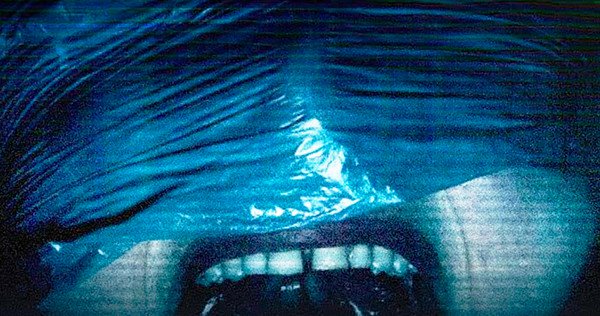To coincide with the release of the next installment of the “Unfriended” movie franchise, Creative Screenwriting Magazine spoke to screenwriter Stephen Susco about writing the sequel. He talks about his writing process, his challenges, and how this film was written and produced at breakneck speed.
In the new film, Unfriended: Dark Web, screenwriter Stephen Susco stepped behind the camera for the first time to direct. In the 2018 movie, the protagonist comes into possession of a laptop and the owner will do anything to get it back.
“I saw the first movie when it came out in theaters,” said Susco about 2014’s Unfriended. “It was an extraordinary experience to see a movie that tried something I had never seen before.” In the first film, a group of online chat friends found themselves haunted by an unforeseen force using their dead friend’s account.

Stephen Susco
“It sort of made the audience the protagonist. I thought it was genius,” he added about the movie that was stylized like a computer screen. “I realized halfway through the movie my hand was moving on my knee and I was trying to push the mouse subconsciously.” How’s that for audience participation?
Since the first film came out, shows like Modern Family (“Connection Lost”) and films like Searching with John Cho have followed this unique new form of storytelling that centers around technology, and specifically social media. “It’s a very clever way, in a movie where you’re watching horrible things happen to nasty teenagers, to really talk about…the cynical and accurate look at social media and how it affects relationships.”
Social media has an increasing role in today’s social and cultural landscape. “I think the movie came out about the time people were starting to take note on depression and suicide from teenagers,” he added. The need to stay relevant in today’s world has turned many teenagers’ lives into a “hamster wheel.”
Unfriended Is More Than a Slasher Film. It’s a Social Commentary.
Susco wasn’t involved with the first film, but he noticed that the movie felt like two horror movies in one. It had the traditional slasher teenage vibe, but it also had an interesting new take on social culture. Basically, there was more going on in this new sub-genre of horror.
Known for his work on The Grudge, The Grudge 2, The Possession and Texas Chainsaw 3D, Susco knew he wanted to get involved with the budding Unfriended franchise. The producers reached out to see if he was interested, but he was also somewhat hesitant since had hadn’t directed and hadn’t written anything in this format.
The producers recognized the difficulty in making a sequel, so they offered him the chance to pitch an original idea for the sequel. “I was excited by the narrative restrictions,” he said. “I had never written a movie that took place in real time. I’ve only seen a couple movies that take place on a computer screen.”
Susco felt like it was a once-in-a-lifetime opportunity to try something new within the horror genre. It was a chance for him to break down everything he had learned before to try something fresh. As such, the writer and the producers didn’t want to simply make a remake or sequel of the first movie. It was a chance to explore new creative frontiers.
Vulnerabilities & Challenges In Writing A Sequel
In the sequel, the characters are older, have more vulnerability, and the movie also focuses more on surveillance and technology. The writer has always thought it odd that everyone is so willing to place all of their lives on social media as there are obvious dangers, which can be linked to this openness.
“It became an opportunity for me to take all of those anxieties and put them into a movie. I think the end result is a combination of those factors,” he added. What’s perhaps most interesting is that the screenwriter found some freedom within the many limitations of the film.
“Anybody trying to make films can fall into familiar ruts,” said Susco. “It really is more like a play. It’s something that has to be cinematic, but you’re not allowed to move. The characters aren’t allowed to move. It sounded like a whole hell of a lot of fun. I certainly didn’t know if I could do it.”
Susco recited the proverb, “Necessity is the mother of invention.” As a lifelong fan of thrillers, he’s always looking for a surprise in the cinema. “The goal was to do something that I had never seen on screen before.”
Over time, he went through two primary phases of rewriting. The budget was only around one million dollars and he had to come up with the first draft of the script in only two weeks. “It was a situation where we had to move fast,” he added. “We were chasing a release date.”
Embracing Limitations Onscreen
In the real-time movie, there wasn’t a need (or chance) to jump around between, so we dove into characters and pushed the boundaries to get the movie finished. “We had five rehearsal days and four days to shoot the dialogue,” he said. This meant finding great actors familiar with stage and being strict with everyone on set. He also wanted the actors to build their own connections and backstory in some respects.
Susco started to tweak the screenplay based on how the actors were interacting with one another. This collaboration made the conversations more believable. They actually filmed the first 47 pages of dialogue on the first day. “These wonderful people were so willing to just dive in and make it a free-for-all,” said Susco.
The movie was given a nine-day shooting schedule, but they wrapped in eight days. After filming the dialogue, they moved on to shoot the stunts. Casting and production helped hammer out a lot of the details for the film.
Shifting Tone in Horror
“Tone is always challenging with thriller and horror. [Comedy is] very important as an escape valve,” said Susco. The tiny authentic moments in the film help to shape each character and create empathy with the audience. Some horror films are never meant to feel real, but this film is all about authenticity.
Having comical actors on set helped the writer-director create new jokes and then he had to decide which ones were right for the tone of the film. The movie begins with an opening password sequence that is both comical and somewhat tense. “It was also a subtle message that, whoever is using this computer, it’s not their computer.” He also didn’t anticipate the opening was going to play as comical as it did.
“People are laughing because they’ve been there,” mused the writer. The next 15-20 minutes are somewhat of a slow burn for the film as the audience is asked to absorb and process the information. In this type of film, it’s impossible to direct the audience’s eye with the camera, so they used mouse clicks and other new ideas to express point of view.
The stream-of-consciousness-like film makes the movie feel like it was shot as a single take. One of Susco’s professors told him, “Movies are what people do. Plays are what people say. Books are what people think.” As such, these three versions change how Susco created characters for his films.
In this film, as he mentioned, he’s somewhat combining a play, a movie, and a book. He spoke with the original writer and producer, Nelson Greaves, to discuss tips and tricks to make the sequel work. Greaves gave Susco some “early warnings” about how to put the audience into a new place and new genre. Through trial and error, most of the film was truly shaped in the editing process, thanks to Andrew Wesman.
As such, Susco realized that some sequences shouldn’t follow each other as they would in a traditional film. Instead, they should happen at the same time. “That’s how we work with computers—we do a lot of things at the same time. It was an incredible challenge,” he added. Wesman and Susco dug in deep to crack the problems and make the film interesting.
Susco said he lost some objectivity while making the film. He was obsessed with making a film that was a slow burn. It wasn’t until the first test screening that he realized it was actually working. This is the way people communicate today and they were paying attention to the right moments on screen.
Dating Films with Technology
The first movie, however, was drastically different. Unfriended was much more linear than the sequel. “They [the characters] were all going to die, one at a time,” said Susco. But, Greaves could then tell story and character details between deaths. “With this movie, I really wanted to take a different tact. That’s kind of the Hitchcockian thriller aspect of misdirection, but the audience knows what it is.”
“Microsoft just completely re-skinned Skype last week,” joked the screenwriter. “We’re now officially last Gen. There’s always this kind of race. The exciting thing about this kind of movie, being that it’s animated, is that it’s highly visual. The good news is that you can try everything, but the bad news is that you can try everything.”
This meant keeping up with the technology while filming and discussing what was realistic in terms of character. For example, an FBI character in the film publically announced that he recommended covering up the camera on a cell phone or computer, as it might not be safe from hackers.
In addition, with this type of movie, they were also able to do some interesting reshoots. “Colin Woodell—who was incredible—we filmed a day with him while he was on vacation in Europe. We just had him point the camera at the ceiling of his hotel room so we could make a match,” joked Susco.
“Anything on screen was just a screen element.” This also meant constant updates as fonts and icons constantly change within social media and technology. “It’s the kind of thing where you can just keep refining and refining and refining.” In addition, much of the story was shaped by the initial technical research.
“I pitched the movie as Jaws on the internet,” said Susco. While doing surveillance research, he took a deep dive into the realities of the dark web. “We’re all swimming around on the top and there’s a hell of a lot of dark space below us. Data with no headers and stuff that Google can’t quite see. This has always happened through history. Pirates found that uncharted island and set up shop.”

